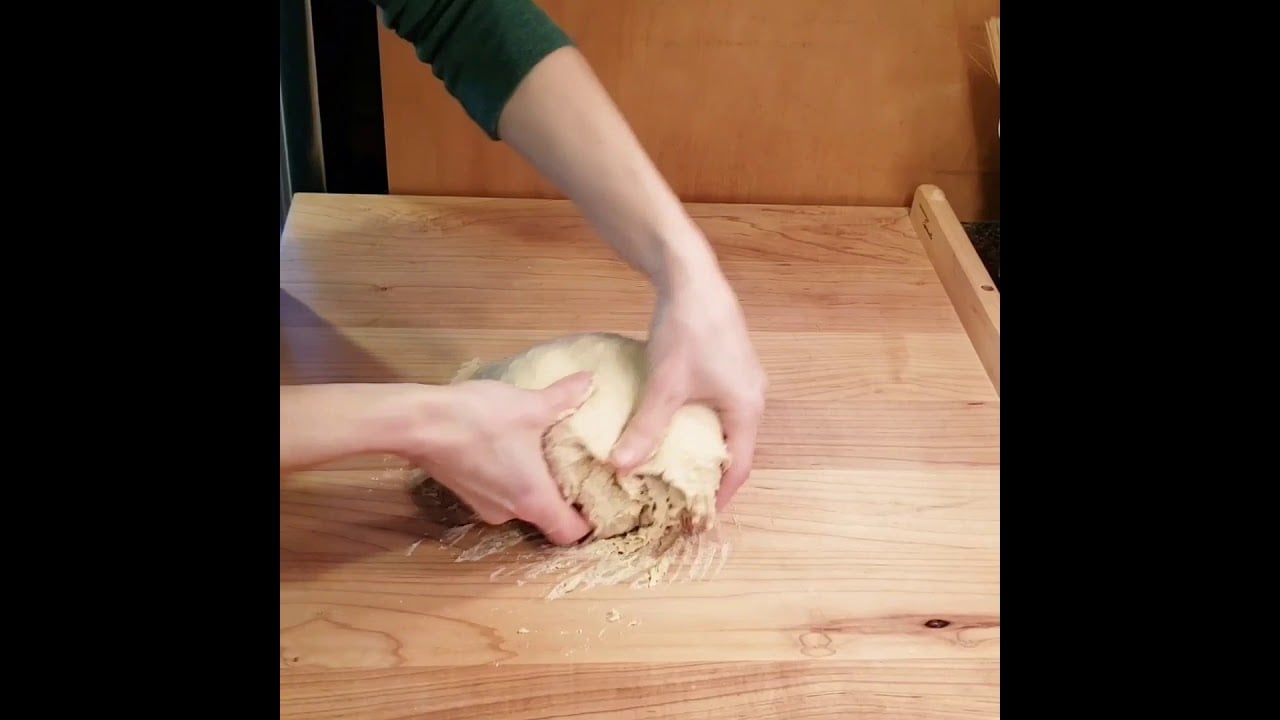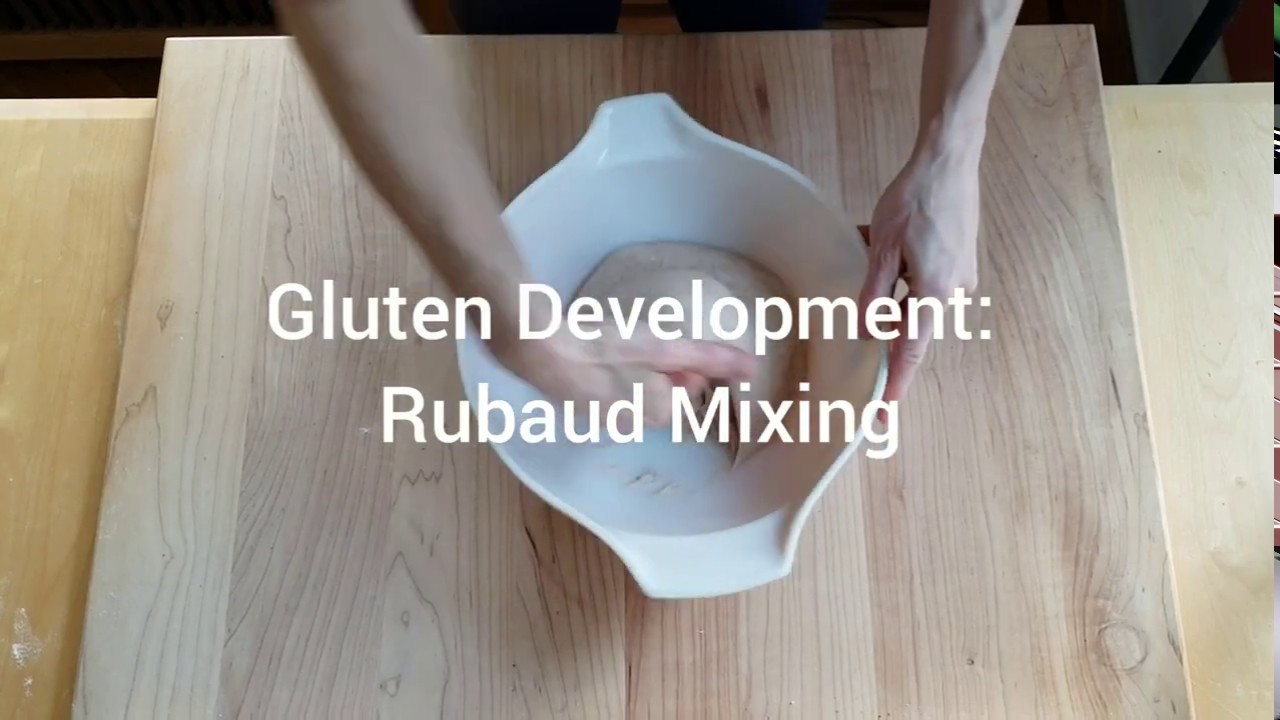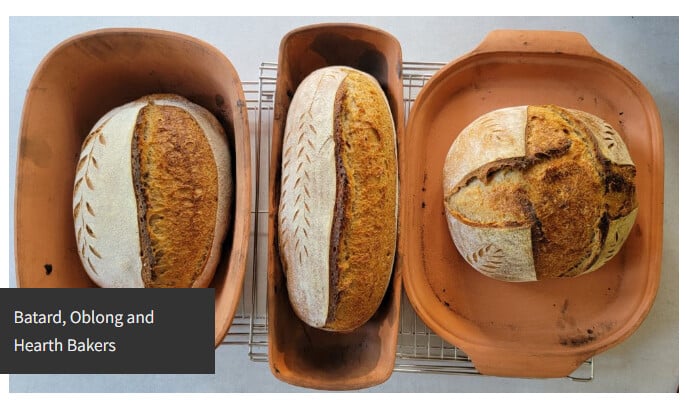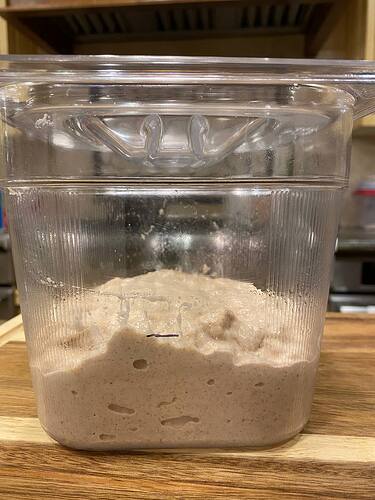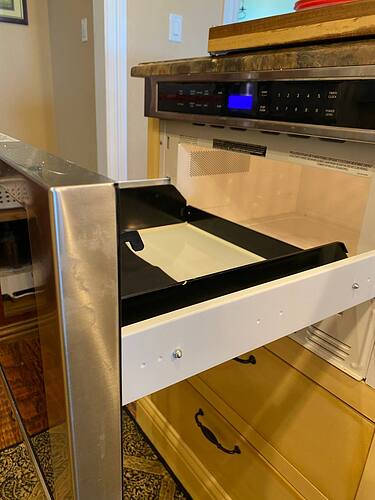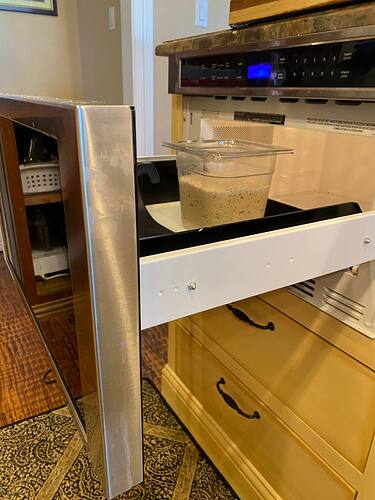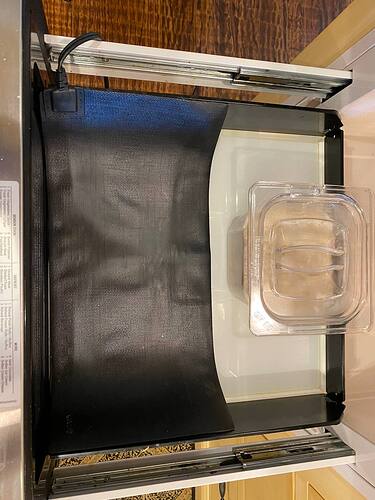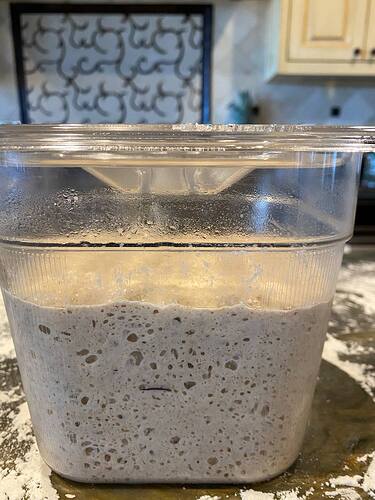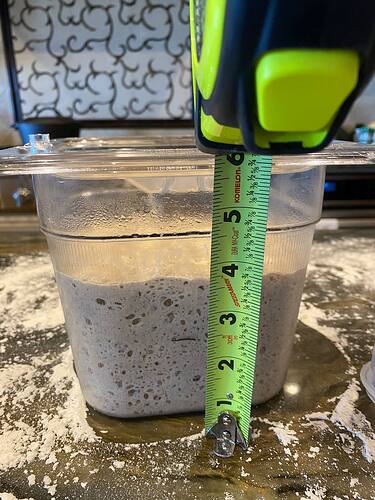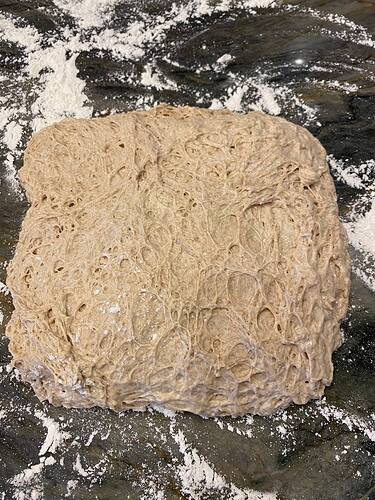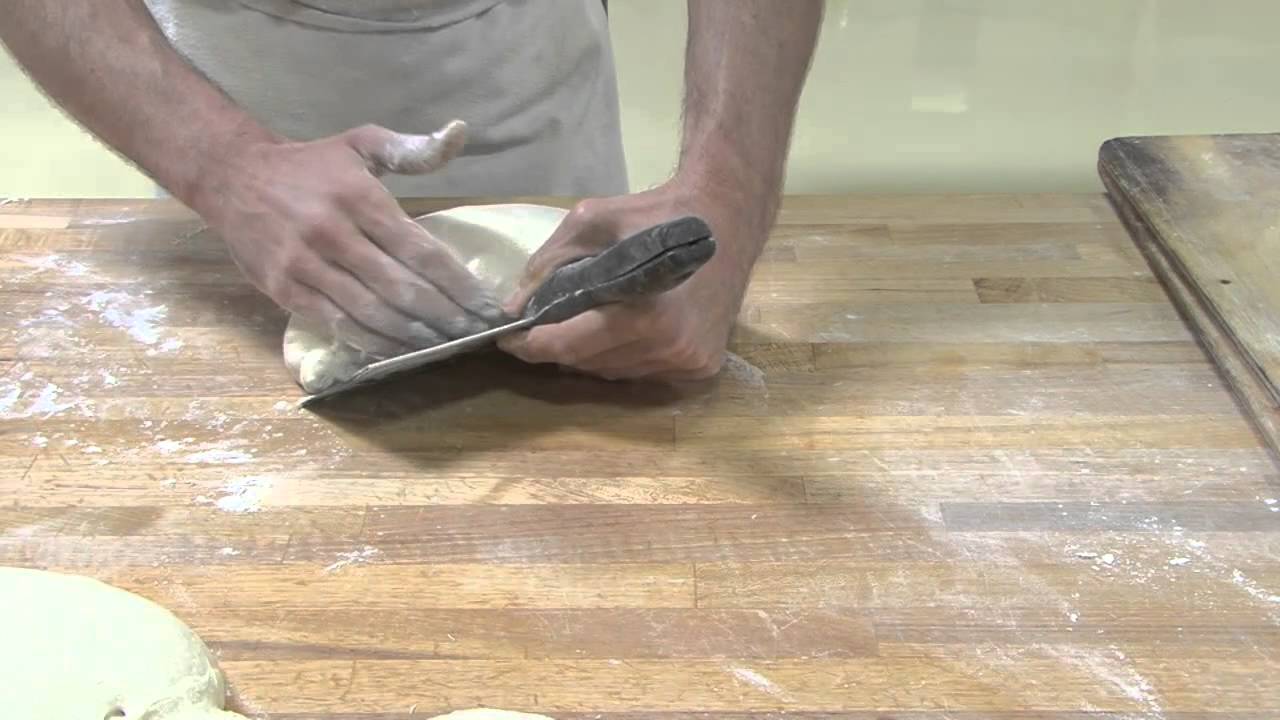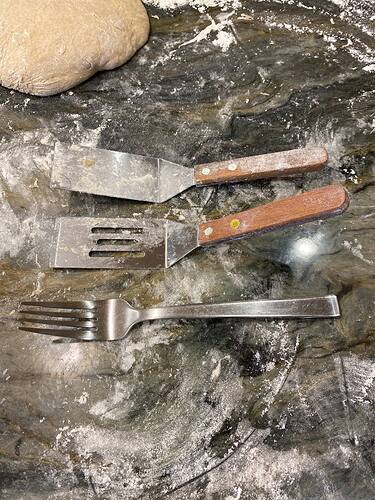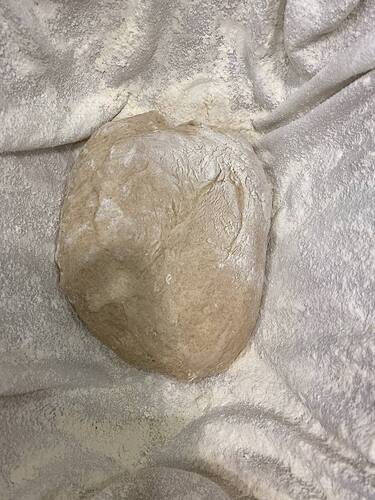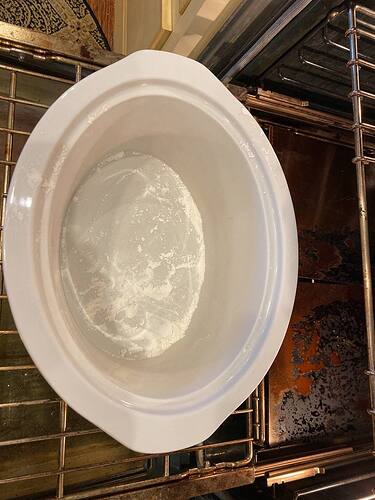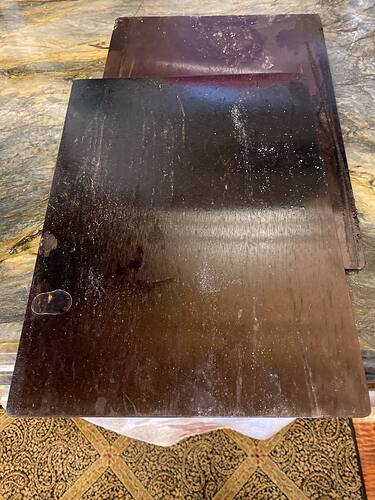A 30-minute 500F preheat should prevent your dough from sticking, but I have never used unseasoned cast iron, so I would have a layer of parchment paper between the dough and iron.
These scoring videos show how to get the parchment in place before the transfer to the hot vessel: How to Score Bread – Breadtopia
My glass lid had a plastic handle so it was out of the question to heat it so hot. Even with a metal handle, I’m not sure what are the temp limits of those slow cooker lids.
No need to grease or flour the container you do the first rise in, but if you want to use one, a spray of oil can make for easy handling.
Rattan proofing baskets have some air flow – this is why when I didn’t have a proofing basket, I used a colander as a substitute, but you have to line the colander with a floured tea towel so the dough doesn’t stick or ooze through the metal.
Wash your quartz with water and occasionally dish soap and use that to knead and shape your dough, or use the cutting board. A cloth would be too messy and sticky imo. (I have a granite countertop and everyone in my home knows they are not allowed to put anything on it i.e. no backpacks, no raw meat.
Here are shaping videos: How to Shape Dough – Breadtopia
A dough can rise fine at 60-63F, whether sourdough or yeast. It will just take longer. It’s up to you how much heating effort you want to make. I have a Raisenne dough heating pad and I also use my oven with the light on for heat.
I have a probe thermometer that reads quickly so I just poke it in at the end. You’ll get a sense of timing the more you practice i.e. Oh, temp is 187F, I bet it needs X more minutes.
Slow fermentation vs quick has some debate. Sourdough vs yeast is less ambiguous, with sourdough fermentation making some nutrients more available for digestion/absorption and creating some antioxidant compounds.
I use a regular scale for big amounts and teaspoon conversions for salt, yeast, baking soda and spices. A super precise scale is great too, but mine lives in my husband’s beer brewing workshop and I don’t bother to fetch it when I bake.
The Hearth Baker is probably the most versatile as it fits batards, boules, and demi baguettes.
You can sift with a #40 sifter and you’ll probably get 8-12% of the bran out of most fresh-milled flours. Keep in mind you lose vitamins and minerals when you sift out the bran.
Breadtopia also offers the flours in whole grain versions as well as high extraction (as you noted, around 15% sifted out).
The second proof of a dough with a small amount of yeast is pretty fast too. You can see it in the whole wheat yeast bread recipe I linked you to above and this one here, which states about 75 minutes: No Knead Bread – Breadtopia
Proofing basket, baking times and temperatures, and container/lid status explained within both recipes as well.
Overproofing is very common. You’ll get a big pillow of a dough that deflates as soon as you score it or move it to the oven.
This article explains the process of feeding sourdough (and yeast) microbes and inflating dough, and optimizing when to shape and bake:
Here’s an equipment guide:
Flour guide:
p.s. I didn’t know that about quartz countertops, but I used to write in healthcare and knew that about copper 
![]()
